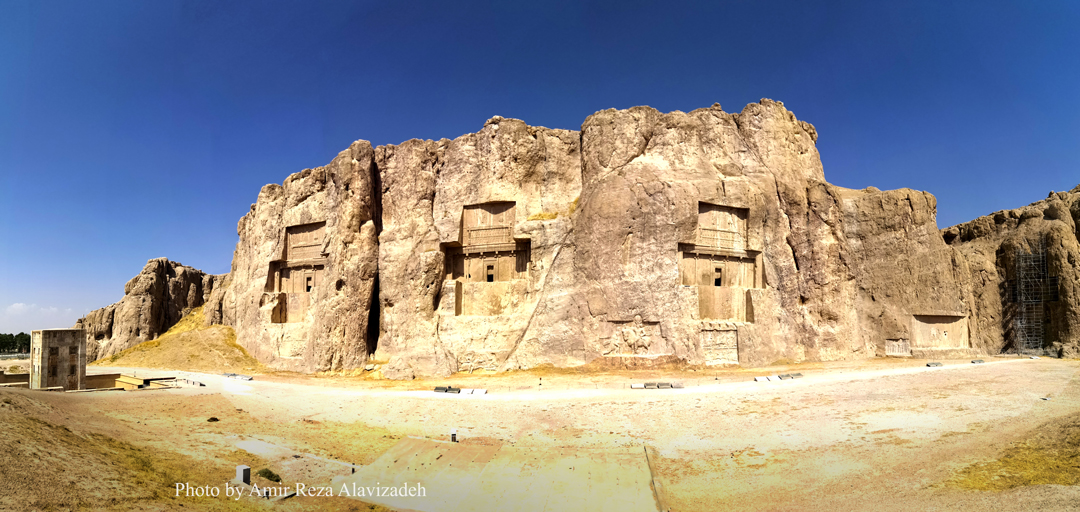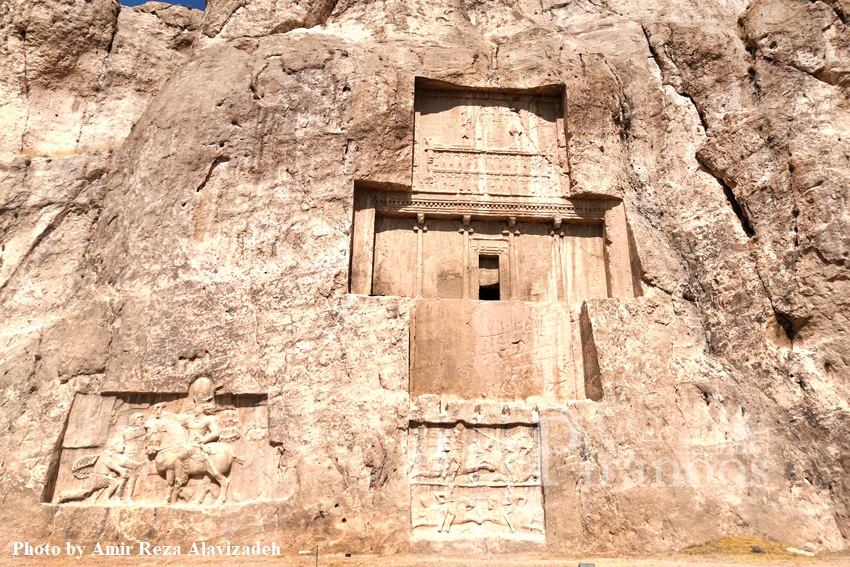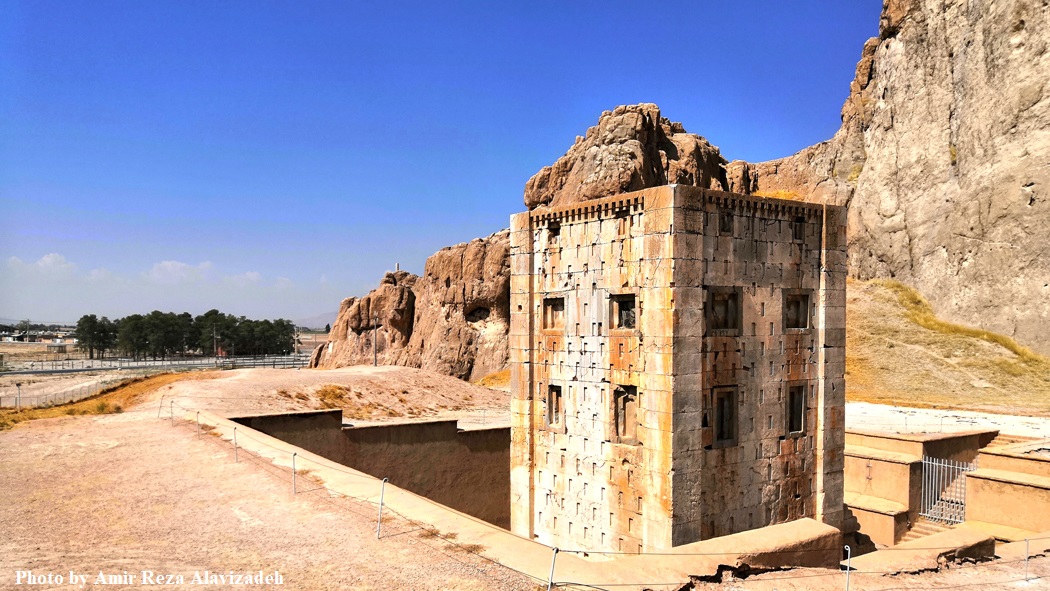Iran is home to many historic treasures. In this vast land, thousands of elements of civilization can be seen in different places. One of the most magnificent monuments is Naqsh-e Rostam. This ancient monument narrates the history of three different periods in the history of this country. Join us in this to discover this amazing historic attraction together!
Naqsh-e Rostam is an ancient necropolis situated in Fars province in Iran. It is situated about 12 kilometers northwest of Persepolis, another magnificent monument in this province. Naqsh-e Rostam is comprised of ancient rock reliefs carved into a huge cliff. The mountain is called Haji-Abad and is located in Zangi Abad village, north of Marvdasht city.

The historical value of Naqsh-e Rostam is beyond imagination. This place hides many treasures from thousands of years ago. The tomb of the four Achaemenid kings, the Kaaba of Zoroaster, and the reliefs of the Sassanian kings and the Elamite gods, are all here in this complex. The oldest historical remains in this mountain date back to the Elamite period. It depicts two gods and a goddess sitting on a bed. The base of the bed looks like a spiral, with two people standing next to it.
Naqsh-e Rostam is also very important in the history of Iran, as here four tombs belonging to Achaemenid kings exist: tomb of Darius I (c. 522-486 BC), Xerxes I (c. 486-465 BC), Artaxerxes I (c. 465-424 BC), and Darius II (c. 423-404 BC). Besides, there are also some beautiful reliefs showcasing the coronation of Ardashir Babakan and the victory of Shapur I over the Roman emperor. It can be easily seen that this place has been always of high importance among Achaemenid and Sassanid reigns. It still demonstrates the greatness of these kingdoms, even after passing thousands of years.
In Naqsh-e Rostam, you will see that the entrance door to the tombs is a square-like door. In ancient times, they locked these doors using huge stones and they sealed the door with these stones to prevent entering the tombs. All the tombs share similar characteristics. The only difference is that there is an inscription above the tomb of Cyrus the Great and not above the tomb tombs. The inscription is written in cuneiform and talks about praising Ahuramazda by Darius the Great and also his ideas and beliefs.
Inside the tomb of Darius, there are nine stone coffins used to bury the king, the queen and the rest of his relatives.
Outside the tombs, there are beautiful reliefs carved into the cliff to deliver the messages to the future generations. In these reliefs, you can see the king holding an arc in his hand as a symbol of strength and in front of him, there is Ahuramazda, the creator and highest deity of Zoroastrianism. There are two braziers in these reliefs to show the flame of the sacred fire. The image of the moon above this frame symbolizes this mortal world. Besides, you can see columns with similar headings to Persepolis. Images of Lions as the symbol of valor and water lilies can be seen at the bottom of these reliefs. In Eastern culture, these flowers symbolize purity.

Another monument in Naqsh-e Rostam is the Kaaba of Zarathustra, which is actually given the wrong name. After the invasion of Iran by Arabs, they named this place the Kaaba of Zoroastrians as they thought that each religion should have a religious center like Kaaba. There are different theories about the use of this building during the Achaemenid period, from holding the Avesta to the Holy Fire! While it is said the usage of the building was to preserve the Avesta Book and the court’s treasuries as well as important documents. it had other usages too, which today, is not pretty clear to us.
This cubic building is located in front of the tombs and its façade is adorned with large stone bricks. The elegance and splendor of the Achaemenid architecture are evident in this monument and has a great historical attraction. It stands in a cavity from the ground level and in front of it, there is a row of stairs, some of which have been destroyed. Around this stone cube, some inscriptions are reminiscent of the Sassanid era.

This monument with its wonderful carvings and motifs is like a history book itself that should be thoroughly read and understood. For instance, a frame of Ardashir Balbakan and Ahuramazda can be seen on a relief carved on the rock. In this picture, which is one of the most important illustrations of the Sassanians era, you can see Ahuramazda and Ardashir on a horse with a carved inscription on their chest. In this image, the size of a human figure is larger than the horse. This difference in scale has been used to emphasize the greatness of the king and Ahuramazda.
Other Sassanid inscriptions are engraved around the monument and show of the historical events of the Iran-Rome War during the reign of Shapur I. Other inscriptions include Bahram II, Shapur I and Hormuz II.